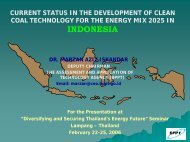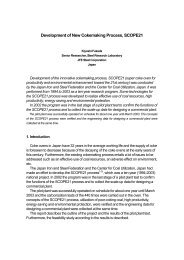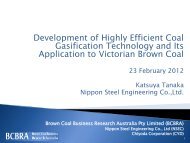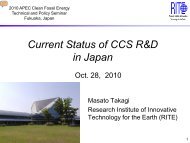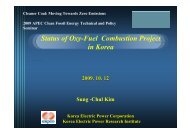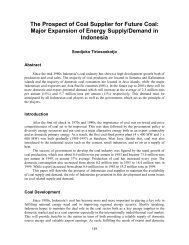Defining CCS Ready: An Approach to An International Definition
Defining CCS Ready: An Approach to An International Definition
Defining CCS Ready: An Approach to An International Definition
- No tags were found...
You also want an ePaper? Increase the reach of your titles
YUMPU automatically turns print PDFs into web optimized ePapers that Google loves.
Appendix C: Policy Considerations and Assessments of <strong>CCS</strong> <strong>Ready</strong> EconomicsPublic policy decisions are sometimes made using “social (public) discount rates” rather thancost of capital of private companies. Assuming that the public discount rate is 5% real, the6th column of Exhibit C-7 shows the revised NPVs 155. Using this criterion the best option is<strong>CCS</strong> <strong>Ready</strong> 1 option followed by the Not <strong>CCS</strong> <strong>Ready</strong> and <strong>CCS</strong> <strong>Ready</strong> 2 options. The use ofsocial discount rates for public policy decisions is often controversial in free marketeconomies because it implies that private companies might have <strong>to</strong> loose money <strong>to</strong> complywith policy mandates. That is, power plant developers have <strong>to</strong> pay a high private cost ofcapital for an incremental invest that yields a return consistent with a lower, social discountrate. Therefore, policymakers should consider policy mechanisms that subsidize <strong>CCS</strong> <strong>Ready</strong>expenditures if the policy is based on net benefits computed using social discount rates.C.4.8 Sensitivity Case: Implementation of a General GHG PolicyThe first sensitivity case assumes that the general GHG policy is implemented sooner withthe cumulative probability reaching 100% by 2018 (rather than by 2025 as in the Base Case).The key inputs <strong>to</strong> this case are shown in Exhibit C-9 and the summary outputs are shown inExhibit C-10 and Exhibit C-11. Because the GHG restrictions start on average 3.6 yearssooner, the allowance prices are higher in any given year compared <strong>to</strong> the Base Case. For2030 allowance prices average $27.96 per <strong>to</strong>n (versus $21.77 in the Base Case) and $107.20per <strong>to</strong>n in 2050 (versus $90.32 in the Base Case). Since electricity prices are modelledpartially as a function of allowance prices, electricity prices are also higher in theAccelerated GHG Restrictions sensitivity case. For 2030 off-peak/on-peak electricity pricesare about $3.80 per MWhr higher than the Base Case and in 2050 about $10.40 higher.155 The social discount rate is used only <strong>to</strong> discount the plants’ cash flows. The decision <strong>to</strong> retrofit <strong>to</strong> <strong>CCS</strong> is unchanged (i.e.it is still made based on private discount rate).23 February 2010 116



